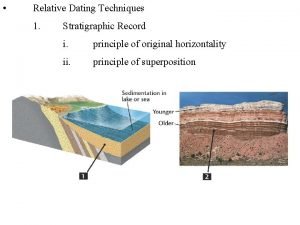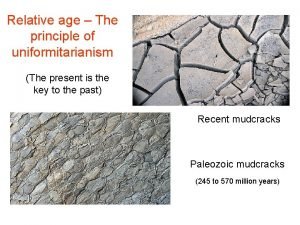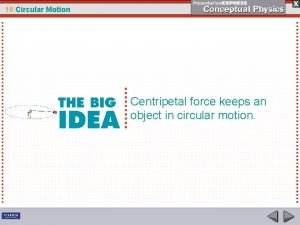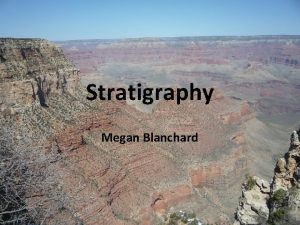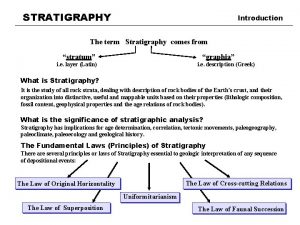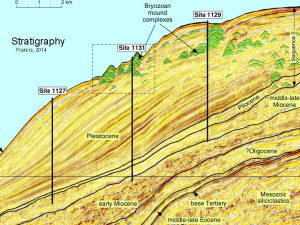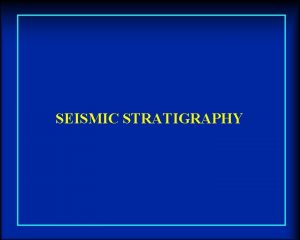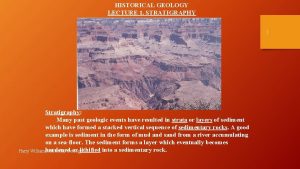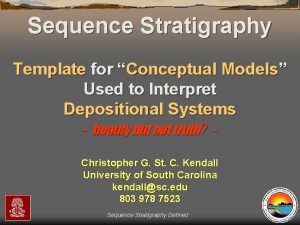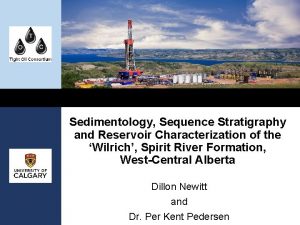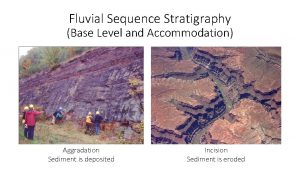31 May 2011 FORCE Sequence Stratigraphy Meeting MegaScale



















- Slides: 19

31 May 2011 FORCE Sequence Stratigraphy Meeting Mega-Scale Sequence Stratigraphy of Slumped Chalk and Sand complexes (MTC) in the southern Norwegian Sector (Quadrants 1 and 2): Application of the NORLEX database. Felix Gradstein, Harald Brunstad, Mike Charnock and Øyvind Hammer

NORLEX OBJECTIVE: A multi company consortium and alliance with the University of Oslo to improve our understanding of lithostratigraphic units in the Norwegian Sector.

STRATIGRAPHIC SCHEMES Chronostratigraphy - Lithostratigraphy - 'Sequence' Stratigraphy P 80 SB Vidar Olistolith P 20 SB Base siliclastics Top Chalk

VIDAR ‘FM’ : NPD FACT PAGES Current Published Knowledge Status

STRATIGRAPHIC SCHEMES dark grey to grey brown very fine grained sandstones, remarkably clean (<0. 1% detrital clay), rounded glauconite pellets common 82 m thick in type well

VIDAR MEMBER (TYPE) New nannofossils, palynology, micropaleo analysis by Jackie Lees, Felix Gradstein, Dirk Munsterman. WELLS • 2/1 -4 • 1/3 -5 • 1/3 -7 NOTE the Maastrichtian dating for the 63 m thick Vidar Member.

VIDAR MBR: POOR COVERAGE Core only in well 1/3 -7 (lower part, distal equivalent) to determine sedimentary facies interpretation.

VIDAR MBR: DISTRIBUTION Vidar Distribution of Vidar Member and Line of well correlation W-E, Wheeler diagram and seismic section E W

P 80 SEQUENCE ELEMENTS NOTE Vidar Escarpment and Vidar Olistolith units (to W)

VIDAR MBR v FORTIES MBR NOTE Relationship of Vidar onlapping Forties Member

REGIONAL WELL CORRELATION Vidar Mbr Olistolith (P 90 lowstand) Top Balder Fm (P 90) P 80 HST Datum: P 80 Sequence SB (base Vidar Olistolith) NOTE 1) truncated P 50 to P 70 (Forties Mbr) below P 80 SB. 2) See also thick P 80 HST (prograding Fiskebank Mbr) Fiskebank

WHEELER DIAGRAM OF W-E LINE IMPORTANT DIAGRAM TO CONSTRUCT FOR UNDERSTANDING SEQUENCE STRATIGRAPHIC RELATIONSHIPS. 1/2 -1 1/3 -7 1/3 -1 2/1 -4 2/2 -2 8/11 -1 NOTE: Rapidly deposited P 70 Forties sands and P 80 olistolith. Stratigraphic time-gap Thin but time-extensive background muds 9/11 -1

DIAGRAMMATIC GEO-MODEL P 70 P 80 SB From Brunstad et al. (in prep. )

PROGRADING FISKEBANK MBR 8/12 -1 (updip well) Top Balder k Top Prograding Clinoforms during P 80 Highstand (Fiskebank Mbr) al Ch

VIDAR MBR THICKNESS NOTE the Vidar Member Olistolith only represents the lower part of the P 80 Sequence Olistostrome.

P 80 LOWSTAND PALAEOGEOGRAPHY Well defined scar on seismic Note apparent relationship between scar feature and underlying salt structures ? partial causal mechanism associated with an unstable shelf margin Extent uncertain (no well control) Chaotic basal unit on seismic Thin prograding shelfal shelf Slumped chalks (Vidar Mbr) Slumped Fiskebank sequence

P 80 HIGHSTAND PALAEOGEOGRAPHY ? uncertain setting Sequence truncated or absent Sand bar forms defined on seismic ? thin, back barrier setting Note: Collapsed scar buried by prograding Fiskebank sequence in this area basin floor muds Progradation direction Only late stage, thin, muddy transgressive sequence B Condensed shelfal sequence associated with condensed parallel reflectors. Some minor progradational units Progradation direction A thick muddy prograding slope Base slope Thick Fiskebank sandstones associated with prograding clinoforms

SUMMARY AND CONCLUSIONS A multi-disciplinary study improves understanding of the Vidar Member. The Vidar Member is interpreted as an olistolith, and part of a large scale Mass transport Complex (MTC) developed in Quads 1 and 2. The Vidar mass transport event is likely Late Paleocene in age. The overlying Fiskebank Member (Prograding shelf sands) is considered genetically linked to the Vidar Mbr and was deposited in areas with increased accomodation space and in the fault scar /collapse area during the earliest Eocene P 80 Highstand. What is the causal mechanism of shelf edge instability ? ? Tectonics related to Norw. Sea break-up. ? Salt movement below the chalk. Mass Transport Complexes (MTC) poorly documented in North Sea.

We thank the organisers of this FORCE workshop for the attractive opportunity to present this study
 Types of folds geology
Types of folds geology Principles of stratigraphy
Principles of stratigraphy Conformity
Conformity Principles of stratigraphy
Principles of stratigraphy For todays meeting
For todays meeting Today meeting or today's meeting
Today meeting or today's meeting What is meeting and types of meeting
What is meeting and types of meeting What is meeting and types of meeting
What is meeting and types of meeting Amino acid nucleotide
Amino acid nucleotide Pseudocode selection
Pseudocode selection Finite series
Finite series Convolutional sequence to sequence learning.
Convolutional sequence to sequence learning. Hci patterns
Hci patterns The force may be with you
The force may be with you Non contact forces portfolio
Non contact forces portfolio What force provides centripetal force
What force provides centripetal force Long range force vs contact force
Long range force vs contact force If you whirl a tin can on the end of a string
If you whirl a tin can on the end of a string The ratio of resistance force to effort force
The ratio of resistance force to effort force What is net force
What is net force

